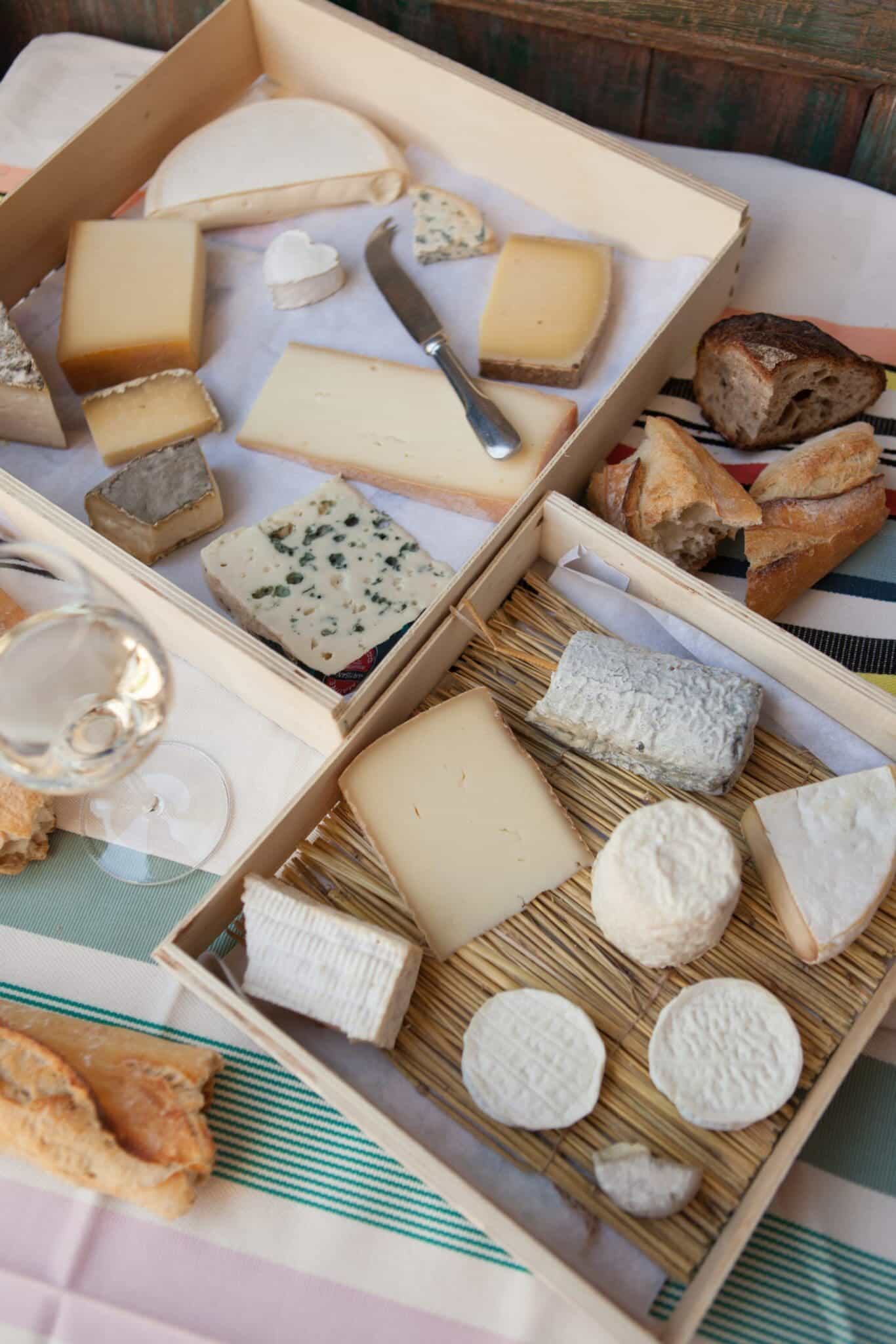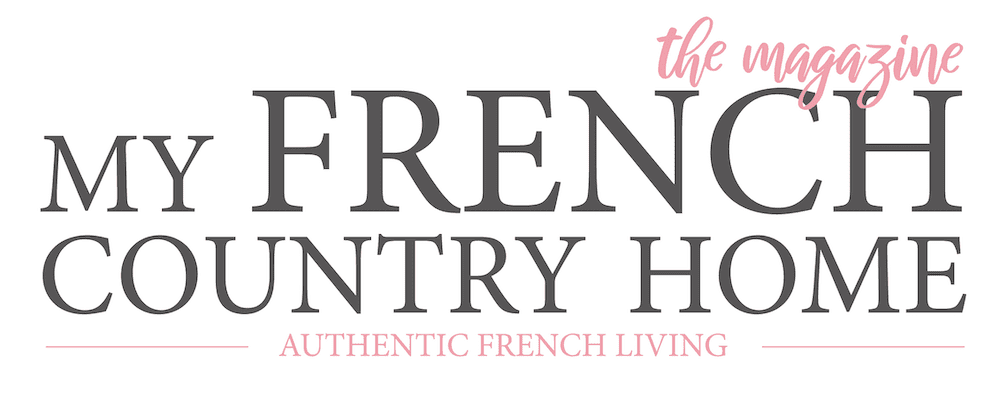Photos & Text by Tania Teschke
Most people who think of the Tour de France think of the famous bike race. Here at MFCH, we prefer a more laid-back type of tour: discovering France’s cheeses!
Below, cookbook author Tania Teschke (author of The Bordeaux Kitchen, which appeared in the “MFCH Book Club” of our May/Jun 22 issue) toured France this summer and put together a mini-guide to its many cheeses.
SUBSCRIBE TO THE MAGAZINE
France is charming for its distinct regional differences – be it landscapes, architecture, local dishes and wine or cheese. The old adage “what grows together, goes together” exemplifies the concept of terroir in France – that each product is a direct result of the different geography, climate and agricultural practices used to create it.
How do you discover, much less govern, a country (as De Gaulle once asked) that produces hundreds of cheeses? The French Government’s answer is the AOP (Appellations d’Origine Protégées), an official designation that’s been given to only 45 cheeses in France, whose unique, local qualities are guaranteed by this label. Narrowing down hundreds of cheeses to 45 seems tragic to a cheese lover, but they are simply representatives of the country’s amazing cheese diversity.
Normandy
Let’s start in Normandy, where dairy fat is king. Here, we encounter not only Camembert de Normandie, Livarot, Neufchâtel and Pont L’Évêque, but also the non-cheese AOP labels of Beurre d’Isigny – a rich, yellow butter – and Crème d’Isigny – a soft, velvety, rich and slightly yellow cream used in sauces (or eaten by the spoonful!). Among the Camemberts, only Camembert de Normandie has the AOP stamp of approval, creamy and pungent, with mushroomy aromas. Pair Camemberts and Bries with a red Saumur Champigny, a white chardonnay or a sauvignon blanc from the Loire Valley. Livarot is a strong, semi-soft cheese with an orange rind wrapped in reeds to hold it together (the reeds form stripes that give it the nickname: “Le Colonel”). Pair it with a Calvados regional cider. Neufchâtel is heart-shaped, semi-soft and similar to a Camembert but milder and drier, with mushroomy aromas. Creamy Pont L’Évêque comes in a wooden box and is square-shaped, with a white-orange rind and a hay scent. Pair these two cheeses with a dry white wine from the Loire Valley.

Two of France’s most well-known cheeses, Brie and Camembert, are produced in many places, but only three kinds carry the AOP stamp of approval: Brie de Meaux, Brie de Melun and Camembert de Normandie. The real deal is Brie de Meaux – hailing from the town of Meaux in the Brie region of Île-de-France, not far from Paris – which is creamy, with mushroomy aromas, and comes in the form of a large wheel. Brie de Melun is a bit lighter on the flavor, comes in a smaller wheel and was created in the town of Melun (also in the Brie region). You’ll want to slice a fresh baguette and eat both of these with fig or apricot jam for a taste of heaven. Moving further north to the Thiérache region, bordering Belgium, we find Maroilles: square-shaped with an orange rind, strong in aroma and tangy in flavor. This is best paired with a local cider.
The Loire Valley
Heading southwest of Île-de-France into the Loire Valley and Nouvelle-Aquitaine, we encounter some of the best chèvres (goat cheeses) that France has to offer; slice up some pain de campagne (dark bread) or pain aux fruits secs (bread baked with dried fruit) and serve with walnuts or other nuts.
Sainte-Maure-de-Touraine is a famous cylindrical chèvre rolled in ash (which you can eat) and is pierced through the middle with a piece of straw (remove this before eating). Try it mi-sec (semi-dry) affiné (aged) or fresh, when it is smooth and unctuous. Not pictured but worth mentioning is Chabichou du Poitou, which is creamy and slightly sweet with floral and herbal aromas. It comes in a cylindrical shape with a squiggly, edible rind and can be eaten fresh (moister) or aged (drier).

Chavignol or Crottin de Chavignol, from the Loire Valley, with its light, goaty aromas, can either be eaten fresh and creamy or aged and dry. A recent discovery for me has been Selles-sur-Cher, which is also rolled in ash and can be crumbly or creamy, with an almost fruity aroma. Pair chèvres with a Loire Valley Sauvignon Blanc, such as a crisp Pouilly-Fumé or a flinty Sancerre. Try an aged, chalkier Chavignol or other chèvres with stronger aromas with a dry, low-tannin Loire Valley red, such as a Sancerre Rouge. If we jog (or sprint) a bit east of the Loire Valley, we come to the Burgundy branch of cheeses, one chèvre of note being the aromatic Charolais –– raw goat’s milk cheese in the shape of a small column, lovely when paired with a red Beaujolais or a white Chablis.
Alsace-Moselle & Bourgogne-Franche-Comté
Further east, we come to the Franche-Comté and Alsace-Moselle cheeses. Here, Comté is a well-known hard, unpasteurized cow’s milk cheese, aged in 45kg (99lb) wheels for up to 30 months. It is the French twin of the similarly fruity and nutty Swiss Gruyère. A typical cheese board will include two kinds of milk cheeses – cow, goat, or sheep – and include one soft cheese and one hard cheese (often Comté is the hard cheese of choice, everybody loves it and knows it). Morbier is a pungent, buttery, semi-soft cheese with a layer of ash in the middle, originally placed there for preservation between the morning and the evening milkings. The king of unctuousness would be the Jura’s Mont d’Or, a thick soft cheese preserved in a round wooden box. Serve Mont d’Or at room temperature or heat and eat with boiled potatoes. Pair both these cheeses with a regional white Jura wine, bien sûr!

Auvergne-Rhône-Alpes
Traveling South from the Jura mountains to the alpine region of Savoie, we encounter L’Abondance, a hard, smooth cheese that tastes of buttermilk and marries well with apricot jam. Beaufort, a raw cow’s milk hard cheese, is melt-in-your-mouth creamy. Reblochon de Savoie has grassy and nutty flavors and is good for melting. Also worth mentioning is Tomme de Savoie: a mild, semi-soft, high-alpine cheese made from skim milk used for other cheeses and butter. Pair all of these with the regional white wines of Savoie.
Further North, we find the hard cow’s milk cheeses, Cantal, with rich, fatty texture and vegetal aromas –– great for grating –– and the dark yellow Salers, with its grassy aromas. Eat these on a fresh baguette with fig and apricot jams, and again, you have a heavenly combination!

Also made from the milk of Salers cows is Saint Nectaire: a semi-soft, lightly sweet and fruity cheese, with notes of hay and mushroom, a brownish edible rind and a creamy texture. Pair both Cantal and Salers according to age – the older the cheese, the bolder the wine. Marry an earthy Saint-Nectaire with full-bodied, fruity red or white wines from Burgundy or the Rhône Valley.
In Auvergne, we also find the two blue cheeses Bleu d’Auvergne and Fourme d’Ambert. Bleu d’Auvergne is dry and crumbly, a rustic bleu that smells strongly of hay and stable. Fourme d’Ambert comes in a large 2 kg (4.4 lbs) cylinder, has a creamy texture and is the mildest in flavor of the French blue cheeses. Blue cheeses are paired best with sweet wines, such as a Jurançon moelleux, from the southwest.

Provence-Alpes-Côte d’Azur
Who would not want to take a little side trip to Provence? The goat cheese Banon – easily recognizable by its unique packaging: wrapped in chestnut tree leaves and tied with raffia – is made here, where the dry, shrubby terrain is perfect for sheep and goats. Its mild flavor and creamy texture go well with pain aux fruits secs, like the chèvres mentioned earlier. Drizzle some local lavender honey over Banon for a sweet take, or some local Provençal olive oil for a savory one.
Also located in the South of France are the caves where Roquefort – a semi-soft bleu cheese that melts in your mouth with fresh, bold mushroomy and buttery aromas and flavors. Pair it with a red wine from Languedoc-Roussillon or a sweet wine from the French southwest.

Occitiane & Nouvelle-Aquitaine
The Medieval town of Rocamadour is definitely worth a stop on our cheese tour. Beautifully hewn into a rocky hillside, it is located along the pilgrims’ route, Saint-Jacques-de-Compostelle. Rocamadour is a small circle of goat cheese brimming with flavor and creaminess, with light butter and nutty aromas. Pair it with a sweet or dry white wine or a light-bodied red wine from the area.
The Basque area –– also located in the French southwest, from the Atlantic coast into the Pyrénées mountains –– produces the lovely sheep cheese Ossau Iraty. Lanolin-scented, with a thick rind, this hard cheese is often served for dessert alongside local dark cherry confiture (jam). This cherry jam, incidentally, is a traditional topping for fromage frais (a fresh, soft cheese made from sheep milk in the Basque Country) but also goes with other favorites: Brillat-Savarin (a triple cream, semi-soft cheese), Tomme de Brebis (sheep cheese), Comté and Emmental, for example. Pair Ossau-Iraty with regional wines from the southwest: a sweet Jurançon or a white Basque Irouléguy for a younger cheese, or a red Irouléguy for an aged.

Next time you’re in France, discover an amazing palette of flavors and aromas as you travel through the regions and encounter all these varieties. One last thing to remember – in France, cheese is served after the meal, in lieu of or before dessert; remember to serve cheeses at room temperature, and, when cutting them, to allow each piece to have a bit of rind. Bon appétit !

Tania is the author & photographer of the award-winning cookbook, The Bordeaux Kitchen: An Immersion into French Food and Wine, Inspired by Ancestral Traditions. Learn more at www.bordeauxkitchen.com

